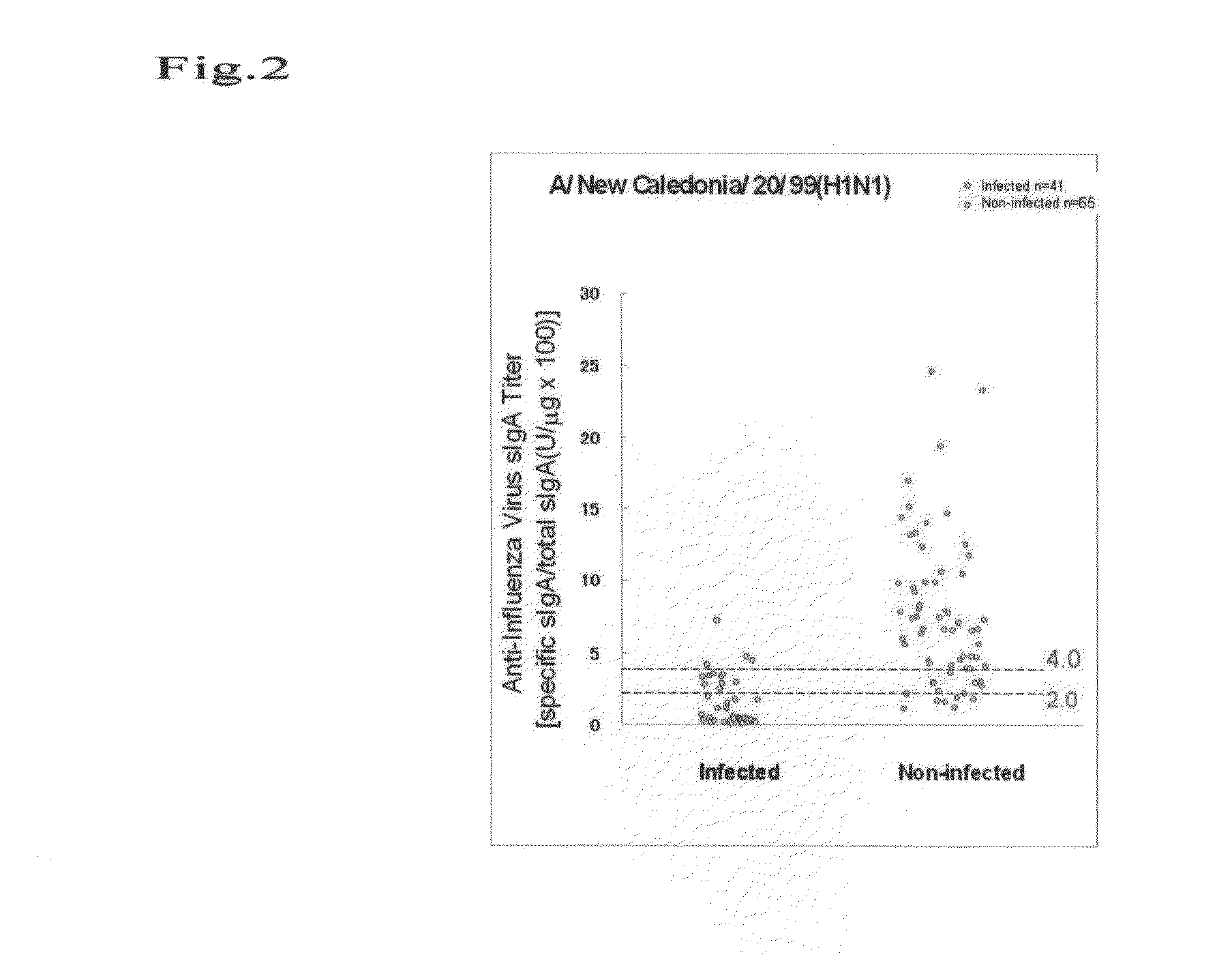Method for predicting risk of acquiring influenza
a technology for predicting the risk of acquiring influenza and acquiring influenza, which is applied in the direction of instruments, biological material analysis, measurement devices, etc., can solve the problems of inability to eradicate it, difficult to determine the risk of infection, etc., and achieves low price, low invasiveness, and applicability to total automation
- Summary
- Abstract
- Description
- Claims
- Application Information
AI Technical Summary
Benefits of technology
Problems solved by technology
Method used
Image
Examples
examples
[0033]The Influenza A / Hiroshima / 52 / 2005 (H3N2) strain, the Influenza A / New caledonia / 20 / 99 (H1N1) strain, and the Influenza B / Malaysia / 2506 / 2004 strain to be used as antigens in a fluorescent antibody method were vaccine (a triple vaccine as a split vaccine for subcutaneous injection) strains which were produced in 2005 / 2006 and 2006 / 2007. Each strain used as a raw material was provided by The Research Foundation for Microbial Diseases of Osaka University. As influenza vaccines to be used in the present invention, in addition to the above influenza vaccine in an ether splitting method, a β propiolactone-inactivated vaccine and a whole particle formalin-inactivated vaccine can also be used similarly. In addition to the above strains listed as representative examples, all the other influenza strains can be used herein. In addition, an example of an antigen to be used herein is a viral antigen with purity of approximately 90% or more whe...
PUM
 Login to View More
Login to View More Abstract
Description
Claims
Application Information
 Login to View More
Login to View More - R&D
- Intellectual Property
- Life Sciences
- Materials
- Tech Scout
- Unparalleled Data Quality
- Higher Quality Content
- 60% Fewer Hallucinations
Browse by: Latest US Patents, China's latest patents, Technical Efficacy Thesaurus, Application Domain, Technology Topic, Popular Technical Reports.
© 2025 PatSnap. All rights reserved.Legal|Privacy policy|Modern Slavery Act Transparency Statement|Sitemap|About US| Contact US: help@patsnap.com



